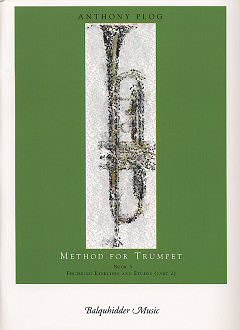Building on our efforts of two weeks ago, we’re back with more Plog (see below) and another attempt at memorization by chunking. This time, we’ll look at an exercise from volume three, built around the major second (M2) interval:
As you can see, this exercise is much harder to read than the previous example. Its patterns are also more complicated. Not only are the patterns shorter and less repetitive, but they are also built up around an interval (M2) rather than a key. If you’re not totally comfortable with whole-tone scales, I’d start practicing those before moving on to this exercise. Let’s start by chunking it:
Event A: “Do-re-mi” ascending, repeated a minor third higher
Event B: Event A upside-down
Event C: Ascending whole-tone scale
Event D: Chain of descending M2s
Event E: Event A and B smashed together, then repeated a step lower
Event F: Ascending whole-tone scale
Event G: Descending whole-tone scale
Note you can’t exactly reproduce the exercise from my event descriptions. But we’re trying to memorize music here, not paint a coat of arms! The verbal descriptions are just little reminders and attempts to make sense with words out of the patterns we intuitively recognize while playing.
Another bit of information I found very helpful when memorizing this exercise is looking at how each pattern (or sub-pattern) connects to the next. To avoid making the exercise one giant whole-tone scale, Plog inserts semitones between each motive. Paying special attention to these while playing made the exercise easier to understand and remember (ie: less random):
One last tip: if you are trying to memorize music that is complicated, think of yourself like a skier or a bobsledder at the top of a long and treacherous course. Take a moment before starting to visualize the course – its twists and turns and pacing – before launching yourself downhill with calmness and focus.
Memorized it yet? As you’ve probably realized already, it takes work – attentive, creative, often time-consuming work – to memorize exercises. However, I’ve found it to be time well spent. Personally, I am very careful about letting my playing stagnate, especially since I no longer take regular lessons and my job does not involve weekly performances. As Andrew McCandless said to me in a lesson once: “You’re either getting better, or you’re getting worse.”

This week’s exercise comes from Anthony Plog’s Method for Trumpet, Volume 3 (Fingering Exercises and Etudes, Part 2).This instalment mainly deals with exercises built up from specific intervals (rather than working within specific keys as Volume 2 does). After some preliminary exercises, Plog begins with minor seconds and expands from there all the way to major thirds and finally mixed intervals. This is a great book to have and the exercises can be very challenging.



